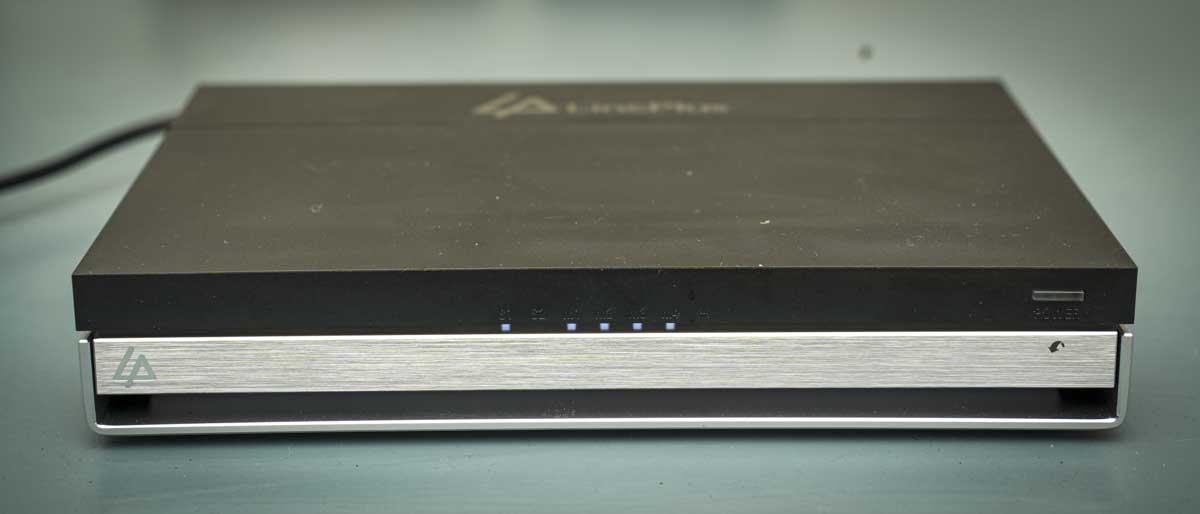TechRadar Verdict
Designed to deliver performance, versatility, and redundancy for small businesses and smart homes, the LincStation N1 excels as a media server and more. While limited by its 2.5Gb Ethernet port, Unraid OS offers flexible configuration options, ensuring user control.
Pros
- +
Compact design
- +
Unraid OS
- +
Excellent performance
Cons
- -
High learning curve
- -
Unraid doesn't use Bluetooth or Wi-Fi
Why you can trust TechRadar
LincStation N1: 30-second review
CPU: Intel Celeron N5105 (quad-core)
Graphics: Integrated Intel UHD Graphics
RAM: 16GB DDR4
Storage: 6 bays (supports 48TB)
Rear Ports: 2x USB 3.2, HDMI 2.0, 2x 2.5G Ethernet
Front Ports: USB 3.2
Connectivity: Wi-Fi 6, Bluetooth 5.2
Audio: None
Camera: None
Size: 220 x 160 x 235 mm
OS Installed: Unraid OS
Accessories: Power cable, quick start guide
The LincStation N1 is a stylish NAS box built to offer a compact and flexible network storage and private cloud solution for small offices and home users. The box runs on Unraid OS, which offers both excellent data protection, scalability, and a relatively easy-to-use interface. However, if you're new to NAS, it will take some getting used to.
LincStation has opted to go straight in with the Unraid UI, which is a good start and means there's plenty of support out there if you need assistance getting started, although it isn't as intuitive as some of the best NAS hard drives we've reviewed. The N1 is bundled with a free one-year licence for the software, this is a perpetual licence, so unless you renew, you'll stop receiving updates to the OS after the first year. If you want to keep up to date with the Unraid OS, then at present the starter licence is $49 a year or $249 for a lifetime licence.
Inside, LincStation has ensured that the NAS box is as flexible as possible, with four M.2 2280 SSD slots split into two banks and two 2.5" SSD ports, enabling a maximum of 48GB (40GB due to the Parity drive setup used by Unraid) of storage that you can configure as you see fit. Installation and setup of the storage through the Main section of Unraid is relatively straightforward, and with clear instructions, you should be up and running within 30 minutes, although some network knowledge is useful.
Once the NAS RAID of choice is configured, you can set up the apps for redundancy and media streaming, making it a great choice for small business setups and advanced home networks.
However, while the N1 supports Wi-Fi 6 and Bluetooth 5.2, integration is limited due to Unraid OS offering limited support, meaning the only real way to utilise these features at present is through the use of a VM.
The N1 setup process might be a challenge for non-technical users, requiring knowledge of Unraid and network configurations. However, for what it offers once it is setup and working and considering the price and flexibility, including all those added functions and features with apps such as Plex it does offer excellent value for money and a superb set of features.
LincStation N1: Price & availability
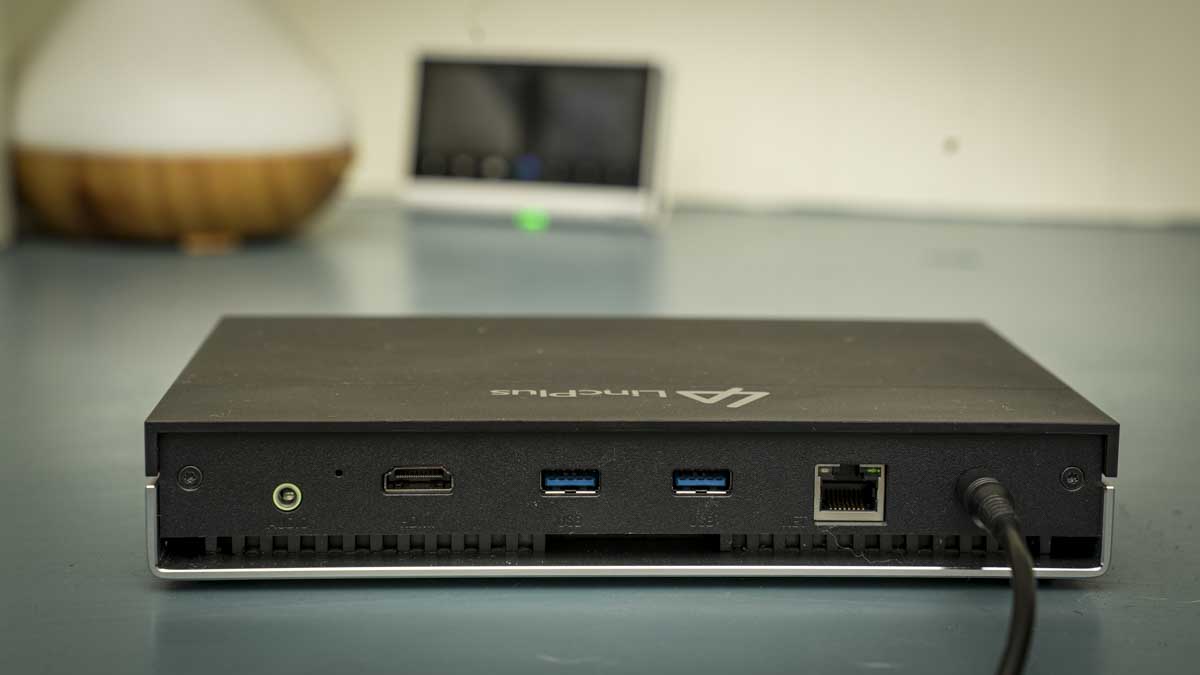
The LincStation N1 is available for purchase directly from the LincStation website and select online retailers for approximately $399.
- Score: 4/5
LincStation N1: Design & build
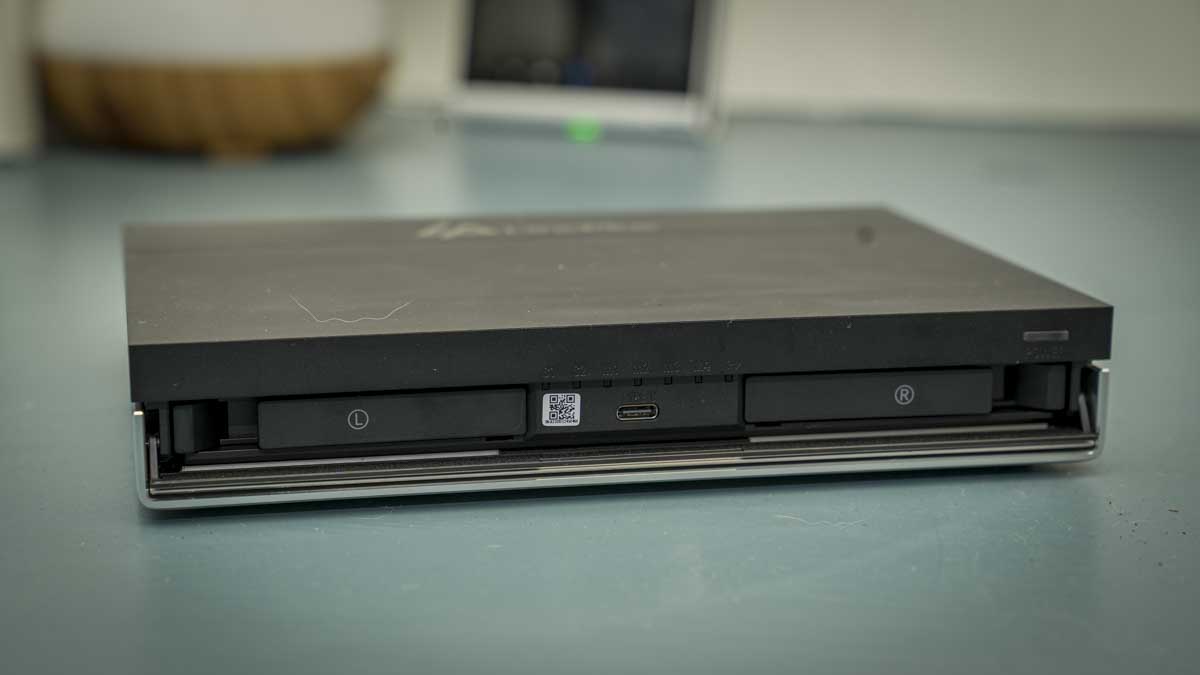
The LincStation N1 is a compact NAS with a stylish industrial design, far removed from the usual utilitarian NAS box style. The mix of black and silver aluminum casing gives it a premium look and feel, and compared with other NAS systems that offer the same amount of internal storage space, it manages to maintain an incredibly small footprint and weight that makes it easy to fit into tight spaces or on a desktop.
The N1 features a 6-bay design that offers a good balance between storage and compactness. Through the two quick-access covers on the base are two bays offering connectors for up to four 8TB NVMe M.2 2280 SSDs, with a further two slots for SATA SSDs, again with a maximum capacity of 8TB, taking the total maximum storage up to 48TB, although this reduces to 40TB due to the Parity drive system that Unraid OS utilises.
Considering the compact size at 210 x 152 x 38mm and a fully-loaded weight of 962g, the design still manages to optimise airflow with a large, quiet fan located at the rear. It's also important to note that the NAS comes with heat sinks for the NVMe drives that should be stuck in place to help with heat dissipation. The rear ports are well spaced out, providing easy access to essential connections, while on the front, the flip-down section, which gives you access to the two 2.5-inch drives, also features a USB 3.2 port.
- Design: 4/5
LincStation N1: Features
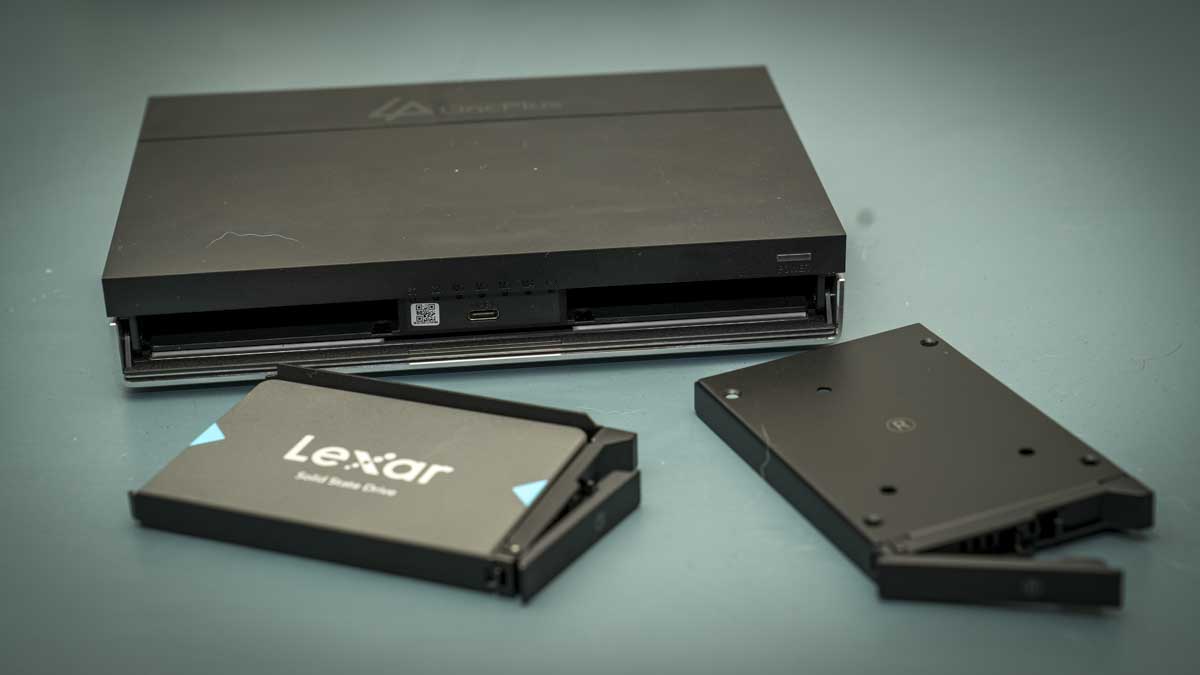
The LincStation N1 has been designed as a compact and flexible NAS system for small businesses as well as homes. It features the Unraid operating system, which enables data redundancy with a custom array format, protecting against drive failures while maintaining high read/write speeds, making it ideal for media streaming as well as the main use as storage.
The inclusion of Wi-Fi 6 and Bluetooth 5.2 connectivity is a nice touch, although the only way you can really make use of these connection types is through a VM and installing an OS such as Linux. As standard, the 2.5Gbps Ethernet port is the fastest way to connect and will enable decent transfer and streaming rates, although the 2.5Gbps is starting to look a little slow compared with 5 and 10Gbps systems which are now more common.
However, there's plenty of processing power, and with the fully featured Docker and virtualization that come with the free year's Unraid license, you can quickly set up and deploy your own customisations depending on your needs. For most people utilising this in a small business environment, it will act as a straight network-connected drive to access files, provide redundancy, and serve as data backup.
The ability to host virtual machines (VMs) and Docker containers means that the N1 is more than just a simple NAS, enabling you to run Plex media server or use it for secure automated file backups.
Looking at the internal storage, you have the option to add up to four NVMe PCIe M.2 2280 SSDs, two 2.5" SATA SSDs, with a maximum capacity of 48TB. When it comes to connecting to the network, there's the 2.5G Ethernet and a USB Type-C. Other ports include a 3.5mm audio port, HDMI 2.0, and two USB 3.2 Gen 2x2 ports for ultra-fast transfer.
As the N1 utilises the power of Unraid OS, you can configure the drives using the built-in array options, enabling either security or speed although these options are slightly different to your standard RAID options you can configer depending on how you intend to use the drive on the network.
With the wide range of apps available for download, you can set the system for automatic backup of your computers and devices, remote downloads, intelligent photo albums, music playback, and of course, as a media server.
Inside, keeping the system running and handling the required processing, there's an Intel Celeron N5105 CPU, 16GB of RAM, and 128GB of internal storage. As previously mentioned, there is Wi-Fi 6 and Bluetooth 5.2, but the Unraid OS is currently unable to take advantage of these. However, if you install Windows, Linux, or another OS on a VM, those operating systems will be able to use these technologies.
- Features: 4.5/5
LincStation N1: Performance
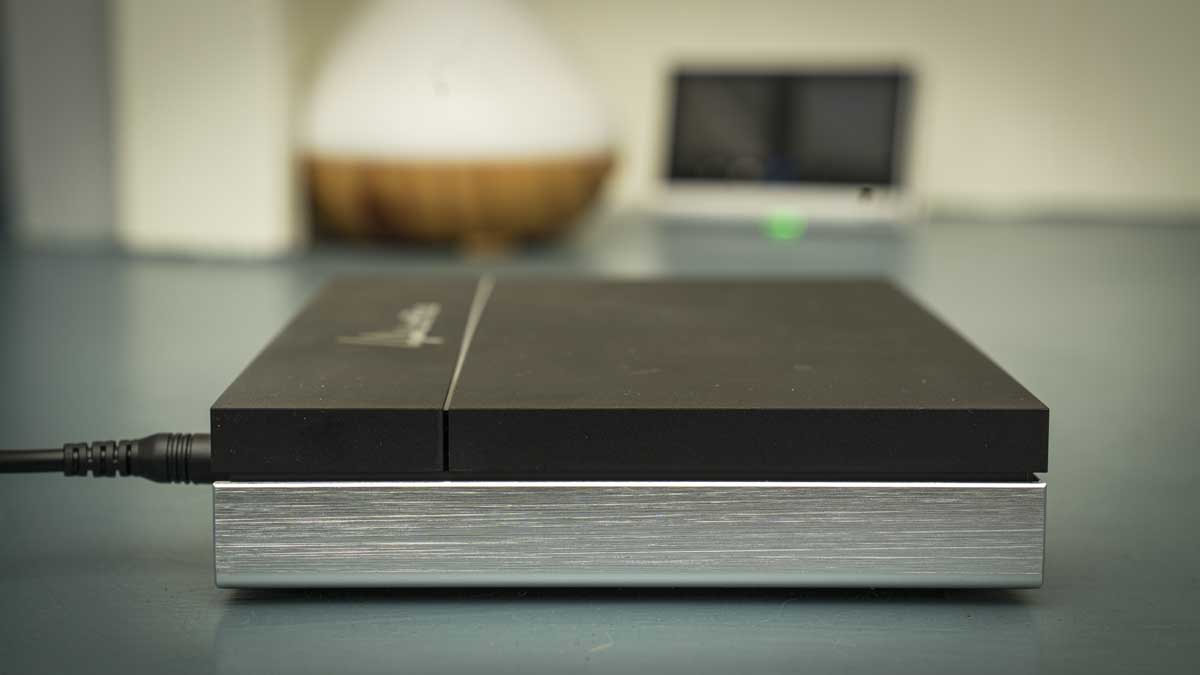
Out of the box, the N1 takes very little time to set up, with latches enabling easy access to the two bays under the N1. These two bays are designed to take two NVMe M.2 2280 SSDs, each with a maximum capacity of 8TB, enabling up to 32TB of ultra-fast access storage. Each module is clipped securely into place with a sprung mechanism, meaning no tools are required.
Likewise, when it comes to installing the two 2.5" SATA SSDs, these are installed through the front of the machine. Behind the silver front panel, which flips down, there are two caddies that hold the 2.5" drives. These take four small screws to hold each of the drives in place on the caddy before they're slipped back into the NAS and locked in place with the lever. Installation of the drives isn't challenging, and this is one of the easiest and fastest solutions out there.
Once that's done, you can plug in and start up the NAS using the button on the front. It takes a few seconds to beep and flash into life, with the array of lights under the silver frontage illuminating. Annoyingly, there's no way to switch these lights off, so as nice as they are initially, they can become a little annoying, especially if you're working late.
With the NAS connected to the wired network, you can quickly access the Unraid UI through http://tower.local/ at which point you get a clear outline of the drives and the health of all drives inserted into the system. Across the top of the UI are all the different sections, but the first step is to set up the drives so that they're working with the Unraid OS. You can then go on to install Docker and any virtualizations you want.
While Unraid can utilise some standard RAID configurations, it's actually a great choice for most small offices and home users because of its flexibility. It essentially doesn't mind if you mix and match your drives or drive types, with the one key rule being that the largest drive you insert should be used as what is known as the Parity drive, of which you can have up to two. These work as non-storage drives and enable the system to recover lost data if a drive fails. So, the Parity drive should be the largest drive you have, up to 8TB, and all other drives you install can also be up to, but not over, 8TB. While this doesn't enable you to have a full 48TB of storage as other NAS drives do, it works in a slightly different way. The other five drives can all be up to 8TB, for a total of 40TB, and if one fails, the Parity drive is able to recognise the failed drive and pulls data together from the other drives to rebuild once a new disk is inserted.
How it works in theory is complicated, but in practice, it all works well. In the N1, we started with a 2TB SATA SSD used as the Parity drive, then installed two 512GB M.2, two 500GB M.2, and two 256GB SATA SSD. As each new drive is placed into the system, the N1, once rebooted, sees the drive as unassigned. You can then select from the dropdown to assign it as required, and also format the drive if needed.
Once the drive configuration is sorted within Unraid OS, you can start to install the Docker container and apps alongside using the NAS as traditional network storage. Used as a network-attached storage solution, the drive speed over the network is impressive, only held back by the speed of the office's own network configuration, which operates at 5Gbps. However, this is still in excess of the 2.5Gbps Ethernet that the N1 features.
After the straight network-attached drives test, it was time to check out some movies using the Plex media server. This, like other apps, can be downloaded through the Apps section, and space allocated. Once set up and running, it can then be accessed through the local URL. Playback speed for local media are excellent and the small NAS seems to have the power as well as storage to supply media around the office at speed for both HD and 4K movies. Likewise the music options worked with similar speed and it's nice to get away from all the usual subscription based solutions.
As with any NAS, it takes a while to work out all the intricacies of the system. While Unraid is excellent, the way it works and how you access the files through the initial setup can be a little confusing, and takes time for those new to NAS systems and networks. However, if you're happy to run through a few online walkthroughs, the process is worth it.
- Performance: 4.5/5
Should you buy the LincStation N1?
The LincStation N1 is a fantastic NAS solution for small businesses or home users looking for a decent and expandable storage solution. The fact that the hardware enables the flexibility to add a mix of different capacity drives allows you to adapt and grow the system as it suits you. The one important factor is to start with as large a parity drive as possible, preferably 8TB, and allow the rest to follow.
In use, the Unraid OS is initially easy to set up, but understanding how to create pools and accessible areas of the storage isn't as straightforward as with many other NAS drives. Some knowledge is required, or at least patience to sit down and watch exactly how this should be configured.
The only other quirks are that it runs on 2.5Gbps rather than 5 or 10Gbps, which would give it a bit more future-proofing, and the fact that, while it has Wi-Fi and Bluetooth, unless you install something as a VM, they're otherwise redundant.
However, once set up, you have a powerful and ultimately expandable NAS system with plenty of features that should suit most small businesses and home users.
| Row 0 - Cell 0 | Row 0 - Cell 1 | Row 0 - Cell 2 |
| Value | Strong price-to-performance ratio | 4 |
| Design | Compact yet sturdy design | 4.5 |
| Features | Advanced storage and virtualisation features | 4.5 |
| Performance | Great for multitasking and media streaming | 4.5 |
| Total | High-performing NAS with excellent versatility | 4 |
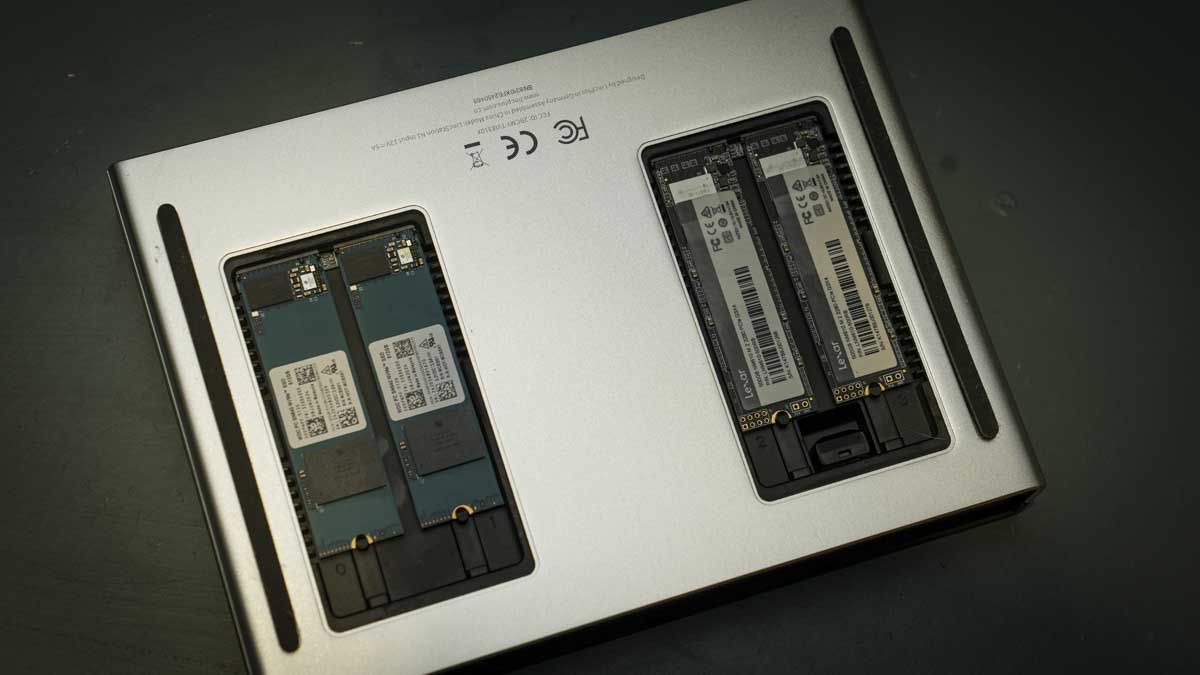
Buy it if...
You need high storage flexibility
LincStation N1 is great for users looking for flexible storage options with SSD and NVMe compatibility.
You want a media server
With Unraid OS and Plex compatibility, the N1 excels as a personal media server, making it ideal for streaming large libraries.
Don't buy it if...
You prefer plug-and-play simplicity
The setup process for Unraid and RAID configurations can be complicated if you're unfamiliar with such systems.
You're reliant on wireless connections
While Wi-Fi 6 is included, the performance is far better over wired Ethernet. If you're wireless-only, it might not meet your expectations.
For more network-attached storage solutions, we reviewed the best NAS devices.
